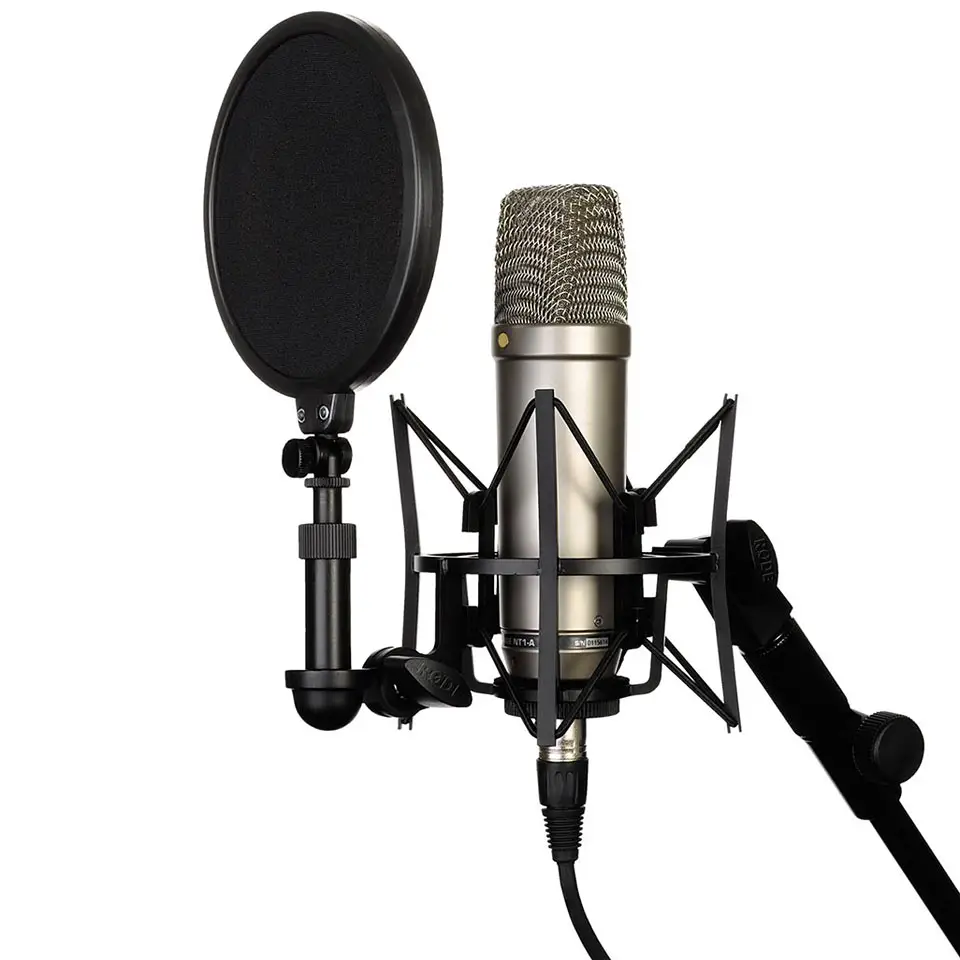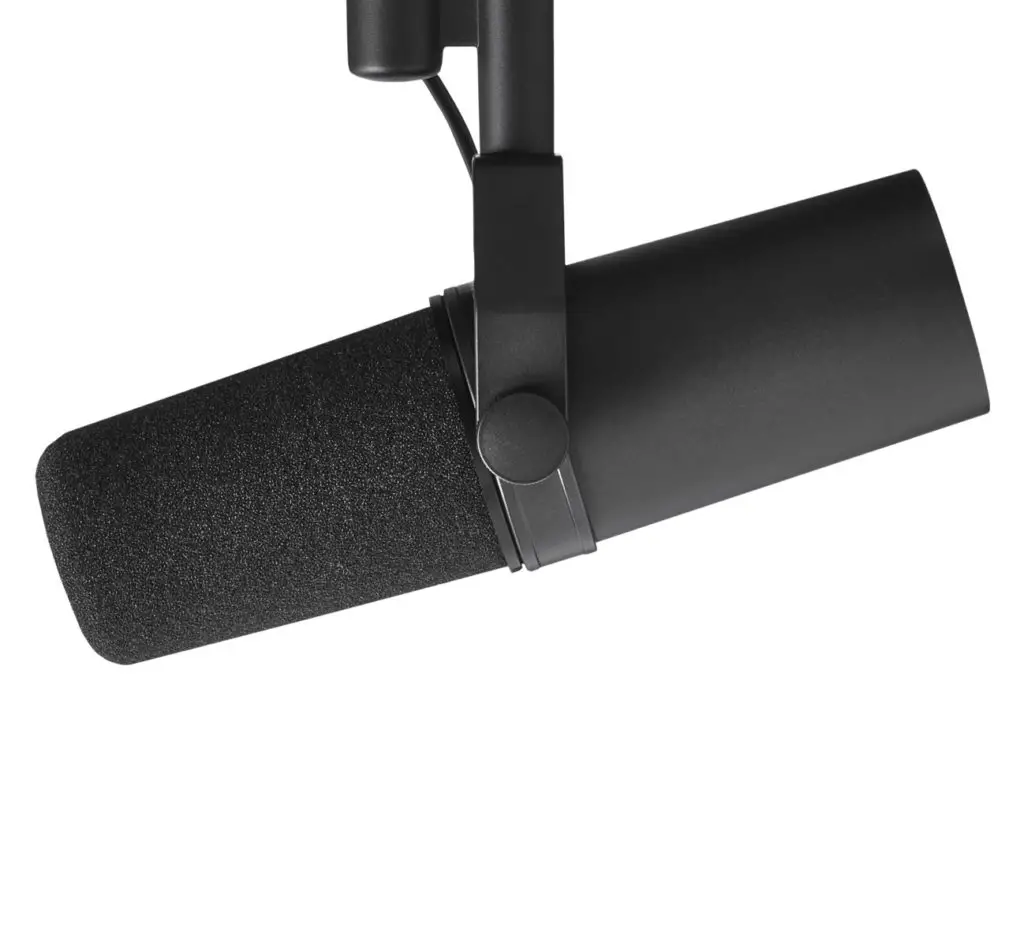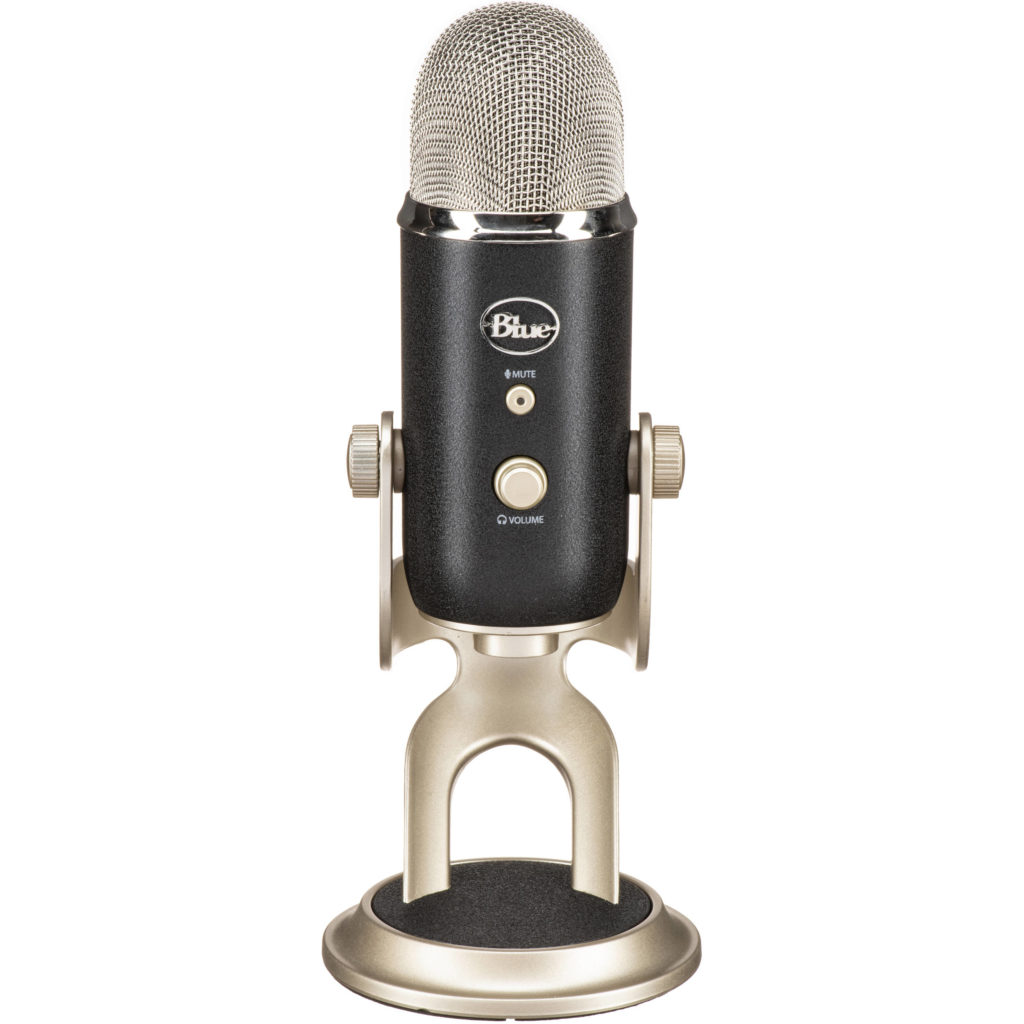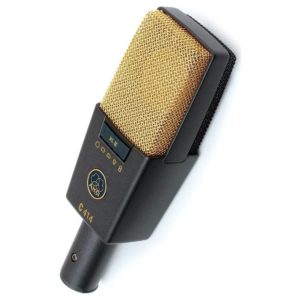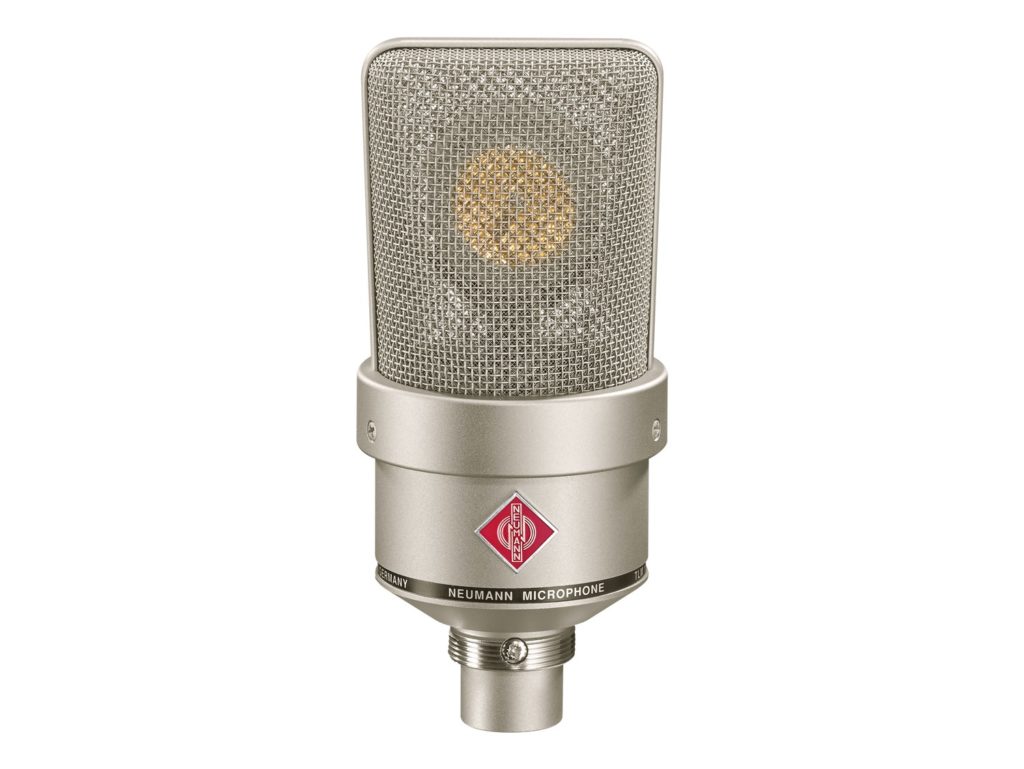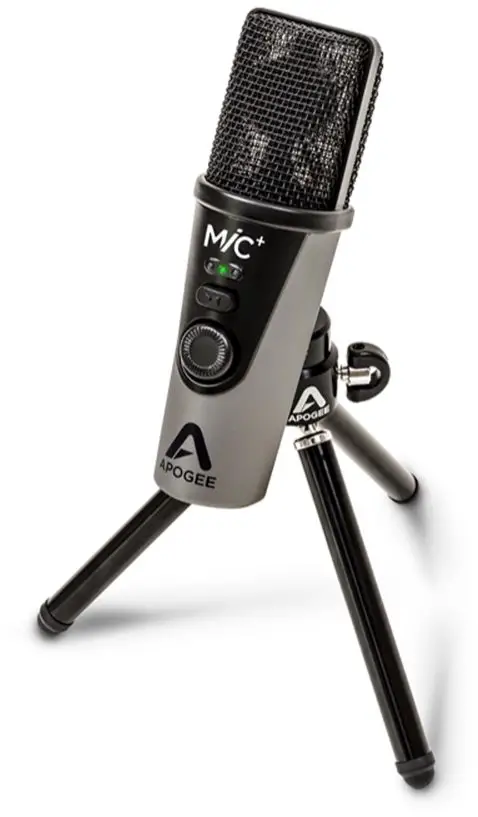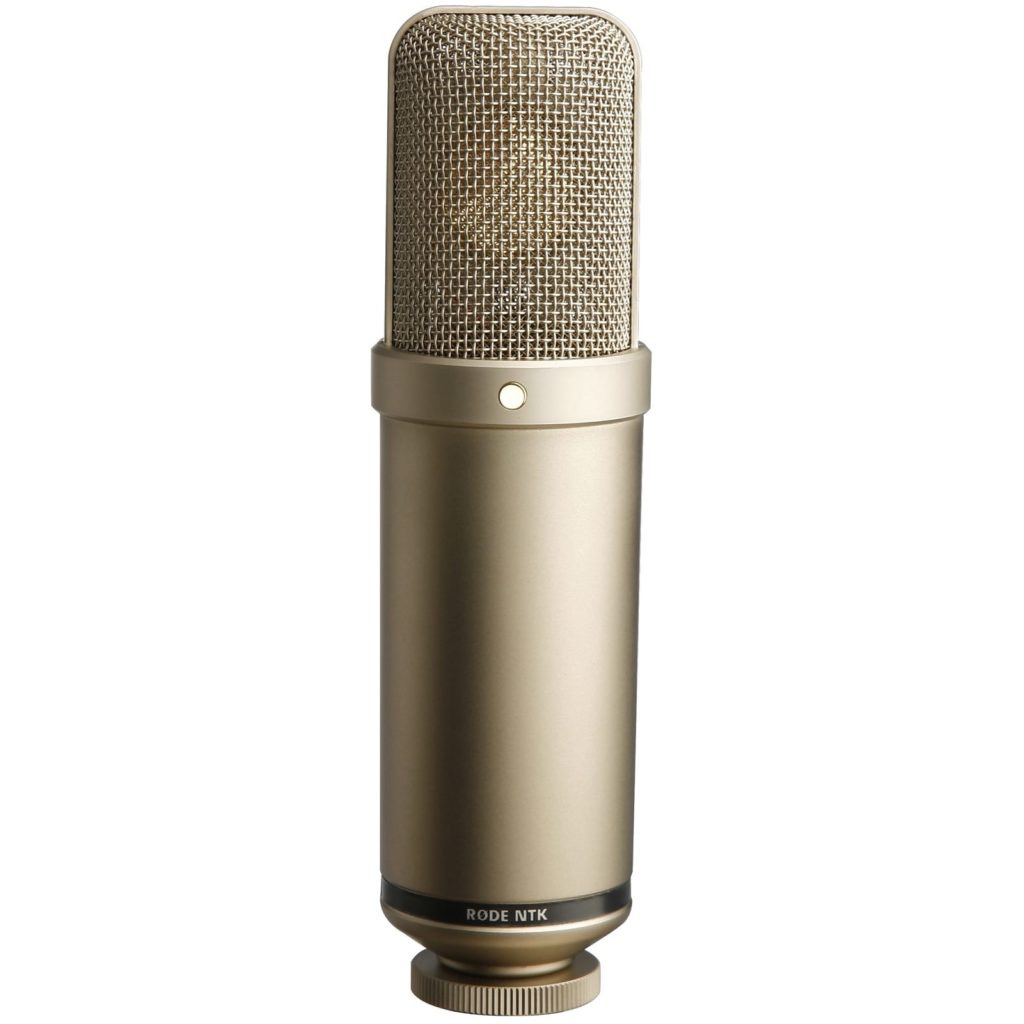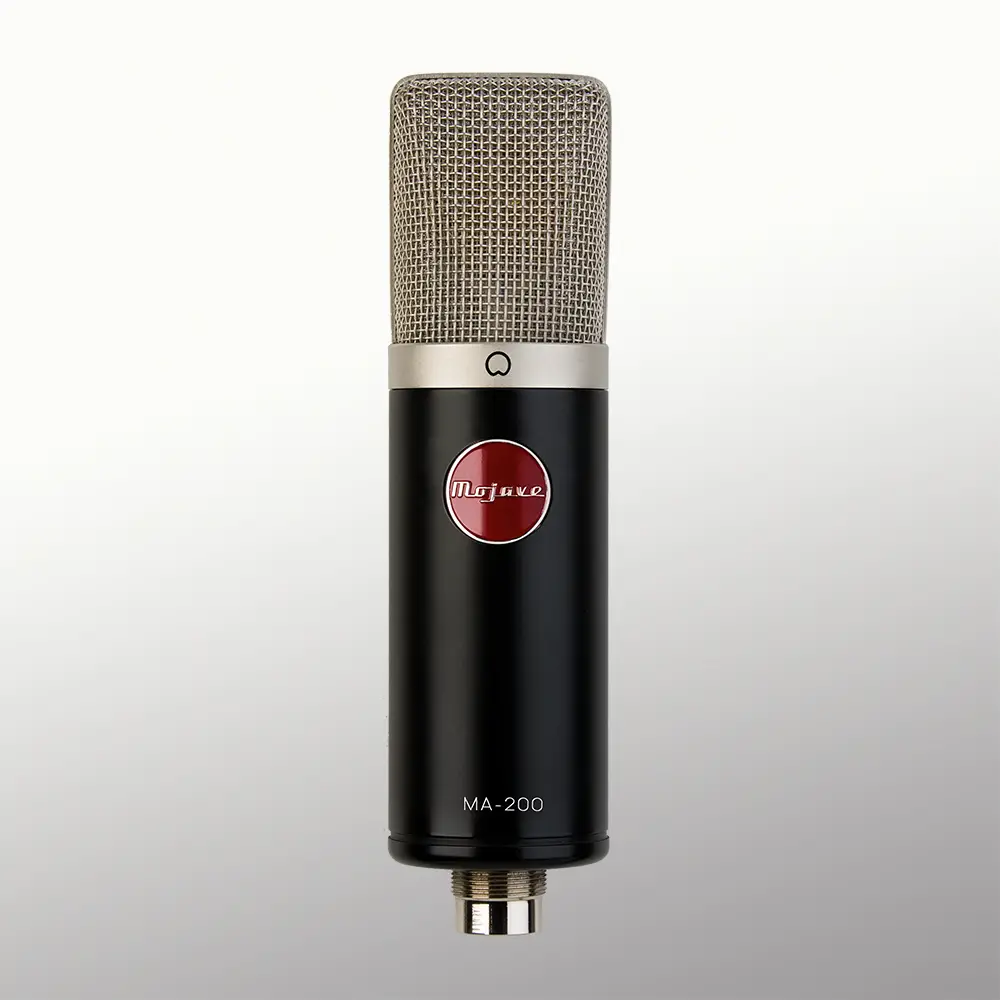What turns a ‘good’ vocal out into a ‘great’ one? Any guesses?
Of course, it’s the vocal quality and pitches. But the next thing you can’t live without as a vocal is – the best microphones for vocals. And that works for ALL!
Therefore, to experience a GREAT recording session, vocals go through all trendy mics within their respective budget, make a shortlist and finally keep his/her hands on one.
But hey, that’s a mammoth task to do, right? In case you’re a beginner, the task is near impossible.
Well, to take over this hectic research and show you the best microphones for vocals at one place, we’ve crafted this entire list. On top of that, we’ve broken down the specs into understandable chunks and backed your purchase with a hands-free buying guide.
Got a minute to check out? Here we go!
Product Quick Comparison: Best Microphones for Vocals
| Product | Polar Patterns | Shock Mount | Our Rating | Price |
| Warm Audio WA-47 | 9 Polar Patterns | Regular | 8/10 | Check price on Amazon |
| Audio-Technica AT2035 | Cardioid polar pattern | Custom shock mount | 9/10 | Check price on Amazon |
| Shure SM7B | Unidirectional | Internal | 9/10 | Check price on Amazon |
| Blue 1967 Yeti | 4 Polar Patterns | No | 8/10 | Check price on Amazon |
| Mojave MA-200 | Fixed cardioid pattern | Regular | 8/10 | Check price on Amazon |
| Rode NT1-A | Cardioid polar pattern | Regular | 9/10 | Check price on Amazon |
| Apogee MiC Plus | Cardioid polar pattern | No | 8/10 | Check price on Amazon |
| AKG Pro Audio C414 | 9 Polar Patterns | Spider-type | 8/10 | Check price on Amazon |
| Neumann TLM 103 | Universal cardioid pattern | Regular | 7/10 | Check price on Amazon |
| Rode NTK | Cardioid polar pattern | Internal | 8/10 | Check price on Amazon |
The Best Microphones for Vocals in 2021
Rode NT1-A Anniversary Vocal Cardioid Condenser Microphone
Product Overview
Here goes the most awaited best microphone for vocals by any means – the Rode NT1-A. In this roundup best microphone for vocals reviews, we’ll be talking about products that are meant for vocals and others as well. But firstly, we’ve got a complete Vocal Microphone Package on the podium. The name? It’s Rode NT1-A Anniversary Condenser Microphone, and we’re going to break down the specs for you.
So, why do we call it not a ‘microphone’ but a ‘microphone package’? Well, there is the Rode NT1-A microphone, a studio-grade pop shield, a shock mount, a microphone cable of 20 feet of length and a dust cover. Unless you’re planning for a wireless mic, that’s everything that you might need for your studio setup or home studio setup as a vocalist. And that’s pinpoints at the fact of why it’s called a ‘microphone package’.
Getting back into the technical stuff, the Rode NT1-A is a cardioid, capsule type microphone. The frequency range is 20-20,000 kHz and the output impedance is 100 Ohm. It can output through a 3-pin XLR output, which is quite convenient.
A good parameter of measuring how perfect a microphone is for a studio environment is to measure its self-noise level. The Rode NT1-A sports a self-noise level of only 5 dBA. And that is how you’d get a quiet studio environment while recording.
Although we’ve been labeling this device as a vocalist’s gear, it has its potential to be for other instrumentalists as well. Especially as long as it’s about recording percussion and guitar, it’s as good as many high-end devices within even double its price.
Talking about the price, it’s one of the biggest selling points of Rode NT1-A. You guessed it right, it comes within about 200 bucks.
Pros
- Less self-noise, only 5 dBA.
- It comes with a shock mount and pop shield.
- Extended dynamic range.
- It offers an externally biased true condenser.
- 20 Hz to 20,000 Hz range of frequency response.
- Quite budget-friendly.
Cons
- The software might be a little difficult to install.
Shure SM7B Cardioid Dynamic Microphone
Product Overview
Let’s call up next on the stage, one of the most popular entities from the product lineup of Shure – the audio giant. It’s the Shure SM7B Cardioid Dynamic Microphone and it stands to be the second runner up of the list, and we’ve got our reasons behind that.
Let’s start with the statement from a fellow user:
“The Shure SM7B is a master of noise-free vocal recording.”
Ask us how?
Well, let’s start with its ability to reject hum and broadband interference (generated by computer monitor). Moving forward, there is another process through which it terminates the mechanical transmission. They call it the ‘internal air suspension’ shock isolation. On top of them all, there is an effective pop-up filter. This filter must reject breath noises, air flows, etc.
Let’s imagine the quality of the sound recorded after so many filtration and cancellation. You might wonder, but it can be 99.99% of what your band vocal had narrated/sung/told.
Moving forward from the noise cancellation to the diaphragm design, we get a classic cardioid plate pattern. It’s uniform with frequency and quite symmetrical with the axis.
To measure how much good is a microphone, vocalists often look up the ability of natural reproduction. Keeping this in mind, Shure had embedded SM7B with a wide range frequency response. It can reproduce clean and natural track of what you’ve originally recorded.
To make sure that you know what you’re doing with all these settings, there is a graphical display of response settings. Result? You don’t have to go blind ever again!
Setting the Shure SM7B up for action happens to be a task of seconds. It comes with a Yoke mounting with a captive stand as well. Together, mounting and dismounting become quite easy.
Pros
- Rejects broadband interference and mechanical transmission.
- Classic cardioid plate pattern diaphragm design.
- Air suspension (internal) and shock isolation.
- Wide range of frequency response.
- Graphically displays recording settings.
- Captive stand and Yoke mounting.
Cons
- Produces a bit of noise at high gain volume.
Audio-Technica AT2035 Cardioid Condenser Microphone Bundle
Product Overview
Let us ask you to list down 3 of the newest audio manufacturers that had captured massive popularity in recent years. We’re certain that 8/10 of you will keep Audio Technica – the German Giant on the list.
And our next pick is one of their budget-satisfying picks. Audio-Technica AT2035, the name is. Let’s check out the specs!
Let’s start with the design. AT2035 comes in a high strength plastic body along with an elastic suspension. The weight is 403 grams and it quite resembles the earlier AT2020 from the same product lineup from AT.
Unlike many other microphones in the market, the Audio-Technica AT2035 has a fixed type cardioid pattern. With it’s 0.8” capsule diameter, it can sport a quite detailed sound representation.
To modify your vocal, there comes an 80 Hz filter of high passing capacity al0ong with a pad switch of 10 dB. The frequency response is quite, as usual, featuring a 20-20,000 Hz range. Almost every kind of vocal note will be well fit within this range.
Lastly, it’s the most crucial topic to discuss, which is the ‘Performance’.
Compared to its earlier siblings (take AT2020 for example), AT2035 is more sensitive and comes with less background noise. Within both midrange and high-range frequency responses, it resembles a worthwhile performance.
Getting out of the vocalist’s comfort zone, if we check out its performance with other instruments such as acoustic guitars, we’ve got quite a remarkable performance from Audio-Technica AT2035. It won’t surprise you while recording instrumental as well.
Bottom line?
Well, we’ve been more than certain that it’s a perfect device for home studio recording. Especially for those who’ve decided to upgrade from a USB microphone to an XLR microphone, it’s more than an ideal deal.
Pros
- Has a shock mount and pop-up filter with it.
- Features a filter pass switch of 80 Hz.
- It also features a 10 dB pad switch.
- A cardioid polar pattern for improved isolation.
- Large enough diaphragm for natural reproduction.
- Wide dynamic range.
- Quite high SPL (Sound Pressure Level).
Cons
- Doesn’t come in a hard, protective case.
Blue 1967 Yeti Pro USB Condenser Microphone
Product Overview
Blue Yeti had been one of the most talked-about microphone lineups, and it is worth the attention at all. For the moment, we’ve elected the Blue 1967 Yeti Pro USB Condenser Microphone to be in the limelight. It’s a perfect pick for vocalists, musicians, influencers, video content creators and gamers.
But mostly, it’s a vocalist’s cup of tea. Why do we claim so? Here go the reasons!
The way Yeti had done some wonder is through mixing a 24-bit/192 kHz digital audio resolution with an analog XLR output. As a consequence, the clarity of the tracks recorded in Yeti Pro comes to be way better than some even pricier models in the market.
Recording vocal tracks sometimes requires more than one performer. Keeping that it in mind, there comes four different recording modes- Stereo Mode, Cardioid Mode, Omnidirectional Mode, and Bidirectional Mode. Switching among them, you can record one artist, two artists and even record from a 360-degree angle.
Do you have a hard time in dubbed mixing? Well, a bit of the hardship might overcome with the cutting edge A-D converter chip in Yeti Pro. It lets you separate the analog circuit path to improve the mixing or preamps.
Once you are all done with the recording chore, it’s time to check out the track, right? Well, there comes another perk of this mic. In the built-in headphone amplifier, you can get zero-latency monitoring. Also, you can enjoy direct contact on the volume, pattern or even the microphone gain of the headphone.
Pros
- 24-bit/192 kHz recording with XLR output.
- Plug and play, easy to use device.
- Sports four different recording patterns.
- Comes with a rugged stand.
- For times more clarified than CD records.
- 15 Hz to 22 kHz range of frequency response.
- Can separate analog circuit path.
- Convenient capsule design.
Cons
- Had issues with macOS High Sierra.
AKG Pro Audio C414 XLII Vocal Condenser Microphone
Product Overview
The AKG Pro Audio C414 XLII is a successor of widely famous and highly sought after AKG C 414 Xl II. Carrying the name of such a famous microphone, the AKG Pro Audio C414 XLII had to overcome even those issues that the previous device had failed.
This the device succeed in the challenge? Let’s figure out!
The C 12 was a companion for instrumentalists and lead vocals, with a denser mix than most of the similarity mentioned devices in the market. The up-front sound was quite likely to do distant applications with a mic.
However, the XLII differs from the previous one, mostly with their respective capsules. There is also a presence of spatial reproduction and a boost in sound quality.
There are 9 pickup patterns that you can get in this device and call up the perfect settings for your application. No matter if it’s a live performance or a permanent installation, the controls will be always on your favor.
The AKG Pro Audio C414 XLII is the newest member of the C 414 family of AKG. But in terms of quality, it seems to outperform many of its senior siblings.
Pros
- 9 pickup patterns to choose from.
- Suits both live performance and permanent studio setup.
- Trouble-free usage and mounting.
- Comes with a carrying case.
- It also comes with pop filters, shock mounts, and windscreen.
Cons
- The carrying case easily gets dented.
Neumann TLM 103 Large-Diaphragm Condenser Microphone
Product Overview
If you’d been an audio enthusiast, we don’t need to introduce Neumann- the brand to you. But in case you’re not a die-hard Neumann fan, you might not recall the Neumann TLM 103, one of their latest releases.
So, does it meet the so-called Neumann standard? Let’s check out!
By default, the Neumann TLM 103 is called a home studio companion. It has an ideal large diaphragm design to make sure that both professional and semi-professional found it a right suit.
A significant selling point of this Neumann is the super low self-noise. That alone can improve the quality of whatever sound or vocal track you record. On top of that, there is a high sound pressure level capacity. In together, vocals are going to be super comfy with this mic.
The cardioid pattern is universal, which enables straightforward handling. Some vocals might like this feature, and some might not. But when you get the low self-noise embedded with it, it becomes quite a vocal’s microphone.
So, what tasks can be done with it? As long as the specs are concerned, you can go for home studio recording, podcasting, a commercial recording and anything similar.
Pros
- Large-diaphragm design.
- Suits home studio applications perfectly.
- Low self-noise with high sound pressure capacity.
- Universal cardioid pattern.
- A budget-friendly vocal’s microphone.
Cons
- Not the right suit for outdoor/live performance.
Apogee MiC Plus Studio Quality USB Microphone
Product Overview
The next product from our list is named as Apogee MiC Plus. Before breaking down the specs of this product, let’s understand it’s motive to be a USB microphone for vocals.
You see, the recording studio of your home or pad is the place where the tracks and podcasts are finally recorded. But while you are in an outdoor environment, there are times when you might need a good quality microphone. And that’s where this charming mic takes over the game.
Apogee MiC Plus comes with a professional cardioid condenser mic capsule, which is meant to capture voice and audio from the frontal side. If you think about a vocal’s necessity, that’s exactly what he or he might need.
While you’re connecting a headphone with the device and up for recording a podcast or YouTube content, there is a headphone output bend control. The role of it is to provide zero latency to the headphones.
Back to the connectivity once again. It’s a device that you can connect to your iPad, iPhone, iPod touch, iMac or Macbook. It’s a dedicated device to connect to the Apple-only device. If you own one, then you’d be happy. Otherwise, you have to look for an alternative pick from the list.
When it comes to connecting this to your iMac or iPhone, the process becomes a plain and simple one. All you need to do is to connect it to the parent device, select MiC Plus and viola! You’re ready to go.
In terms of price point, it’s neither a super cheap one nor an expensive one. So, you can go for this Apogee MiC Plus even if you are a bit tight with the budget.
Pros
- Great precision with 46dB of mic preamp gain.
- Professional cardioid design.
- Zero-latency monitoring in the headphone.
- Plug and play, no configuration required.
- Quite portable and carriable design.
- Meant to be an indoor/outdoor vocal’s companion.
Cons
- It’s an iOS-only device.
Product Overview
Next is NTK Premium from the inventory of Rode- an Australian owned brand. NTK being one of their signature models provides a good value for the money.
We’ll dig deeper below.
The technical specs contain a 1-inch capsule design with a gold plated diaphragm. The valve circuitry is Class A- standard. The triode valve is hand-selected and graded with a 6922 twin hardware.
As long as shock mounting comes, there is an internal shock mounting which promises entire stability. On top of that, there is a high RF noise level rejection with ultra-low internal noise.
Altogether, it’s a good pick for the money. The heat-treated steel mesh is there to protect whatever I inside the tube.
The Rode NTK Premium is, therefore, a good option to grab if you are a vocalist, instrumentalist, drummer or even a guitarist. The price point is quite satisfactory.
Pros
- 1″ capsule design with a large diaphragm.
- Internal shock mounting.
- Ultra-low internal noise.
- It comes with high RF noise rejection.
- Protected with a heat-treated steel mesh.
Cons
- Not so great reproduction of sound.
Warm Audio WA-47 Large-Diaphragm Tube Condenser Microphone
Product Overview
Warm Audio WA-47 is the next product to discuss. Sound enthusiasts often refer to it as the ‘New Kid on the Block’, but it had done wonders in terms of both quality and durability.
Here goes down dissection of the features that Warm Audio WA-47 comes with!
WA-47 is named after the classic and one of the most sought after Neumann U47 tube microphone. Like it’s inspiration model, WA-47 comes with a large diaphragm with output based on the transformer. Also, it has multiple pickup patterns, which is a plus.
But unlike the original, the WA-47 pattern is switched at the power supply, with a handful (9) of pattern variations.
According to an announcement from Warm Audio, the WA-47 and it’s a junior substitute (WA-47jr) sport a custom reproduction of K47 style capsule design. Underneath the tube, we get a neat circuit board saturated with WIMA capacitors and Rubycon.
The gain factor of this microphone is quite low, as long as the JJ 5751 tube design goes. To make things even sweeter, it comes with a metal clamp which acts as a heat sink as well.
As long as the WA-47 series is concerned, there is a head to head battle between the WA-47 and WA-47jr. They share some features such as K47 style capsule design, large-diaphragm, switchable patterns, and a discrete signal path. But there are some advantages of WA-47 over the junior sibling. The JJ 5751 valve and the AMI transformer out are the standout features that only the WA-47 sports.
While delivered, you will receive the Warm Audio WA-47 itself, an external power supply, the shock mount, the cable, and a protective wooden box to keep things safe while carrying.
Let’s get into the verdict now.
The thing is, brands that offer quality microphones under $1000, often missed one or two quality factors anyway. But Warm Audio had met the best of both worlds with WA-47. And we highly recommend it for you if you’re a vocalist.
Pros
- Large-diaphragm with 9 polar patterns.
- Inspired directly from classic Neumann U47.
- The gain factor is quite low.
- Sports AMI transformer and a JJ5751 valve.
- It comes with a shock mount and a protective box.
- High built quality according to the price.
Cons
- No Pad or HPF provided.
Mojave MA-200 Professional Microphone
Product Overview
The Mojave MA-200 along with its cable and accessories come in a hardshell case. This shell is meant to protect the devices and accessories even when you’re carrying it rough on the way.
First thing first, let’s talk about the microphone itself. In terms of recording quality, Mojave MA-200 sounds great. When it comes to reproducing the sound from a vocal or an instrument, it almost hits the bar.
This device lies on the product lineup designed by David Royer, which happens to be one of the vocalist’s favorite choice list. The MA-200 sports a large diaphragm, a vacuum tube condenser and a fixed pattern of the cardioid.
One of the problems with modem condenser microphones are, they tend to show up with high-frequency distortion or shrillness in the track. Mostly when the vocal or the instrumentalist records at the high pitch, this fact takes place more often.
But the Mojave MA-200 has a capacity of full-body reproduction of vocals and instruments, which takes over the issue and shows no shrillness or high-frequency distortion at all. Good for a vocalist from any viewpoint, right?
MA-200 offers some flexible options when it comes to power and frequency control. It can operate itself from any range within 115V to 230V. On the other hand, it can also range from 50 Hz to 60 Hz, based on the demand. And all these changes won’t require any expertise at all. There is an internal switch through which you can do it anyway.
The shock mount that it comes with, is one of the best of the game. It locks down the microphone in such a way that you can suspend it upside down. Also, you can position it in tricky places such as inside the drum kick, over the piano, etc.
Overall, we found the MA-200 from Mojave a perfect microphone for vocals, record artists, broadcast artists, instrumentalists and anybody similar to them. It’s a good bang for bucks as well.
Pros
- It comes in a protective hardshell case.
- Good at reproducing the sound.
- Vacuum tube condenser with a large diaphragm.
- No shrillness or high-frequency distortion.
- 115V to 220V operable.
- Can intake anything between 50 Hz or 60 Hz.
- It comes with quite a protective shock mount.
Cons
- Might not be a beginner’s cup of tea.
Buyer’s Guide
Before you put your wallet out and invest after your next vocal’s microphone, here’s a dedicated buyer’s guide to hone up your decision:
Know the Right Type of Microphone
There are three clear types of microphones that vocals can use. Here goes the list:
- Condenser microphones – mostly popular for indoor studio recording. The internal built quality is the best kind and so is the sensitivity.
- Tube microphones – usually referred to as a ‘kind of condenser’ microphone, but there are some differences. Tube mics are quite an old school and yet, resemble a high-performance standard.
- USB microphones – as the name suggests, they are ready to use anywhere anytime without a ‘real’ power source nearby it.
Understand the Polar Patterns
In almost any device in the list, you’ve seen a term called ‘X polar patterns’, haven’t you?
There can be five kinds of polar patterns as log as a vocalist’s mic is concerned.
- Cardioid polar pattern.
- Supercardioid polar pattern.
- Omnidirectional polar pattern.
- Figure-8 polar pattern.
- Multiple polar patterns.
We want you to understand and research each of these polar patterns because, at the end of the day, you’re going to need one particular pattern. The device that you’d buy definitely should have the right polar pattern indeed.
Ensure The ‘Extra’ Stuff
Apart from the mic itself, you need to have several other stuff, which will be needed in times. The list contains a hard case for protection, a pop-up filter, a shock mount, an external power cable, a power box, etc.
Frequently Asked Questions
Question: How many polar patterns can I get with a good microphone for vocal recordings?
Answer: Considering the diverse range of studio setup vocalists use, you can get up to 9 polar patterns.
Question: How many types of shock mount are there with vocal’s mics?
Answer: As long as this roundup review is concerned, there are 4 – regular, custom mount, internal and spider-type.
Question: What accessories does a good mic bring with it?
Answer: That varies from brand to brand. But you can get accessories like shock mount, pop up shield, cable and dust cover, etc.
Question: How can I understand how a mic will be performing in a studio environment?
Answer: This can be generalized from the self-noise level of the mic. For example, the self-noise of Rode NT1-A is 5 dB only, which is pretty low. So that would be a good studio mic for sure.
Question: Is a vocalist’s microphone able to record other instruments?
Answer: Good vocalist’s mics like Rode NT1-A, Shure SMB7, etc can act both as a vocal’s mic and instrumentalist’s mic also.
Question: How can I recognize a good diaphragm design of a mic?
Answer: Apart from testing its performance, another way of checking a diaphragm’s quality is to check out for asymmetrical design.
Question: Do these mics display the mic settings while recording?
Answer: Not all of them have got a digital settings display. But high end picks as Shure SMB7 show them graphically on a screen.
Conclusion
Hey, pay your back! You’ve just finished the 4000-word long list of best microphone for vocals review with their buyer’s guide and faqs. Hopefully, that has been more than enough to let you pick up the next mic that you’re going to conquer the world with.
Just kidding. Good luck with your recording sessions onwards!
